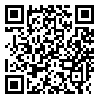BibTeX | RIS | EndNote | Medlars | ProCite | Reference Manager | RefWorks
Send citation to:
URL: http://nmj.umsha.ac.ir/article-1-1021-en.html

 , A. Feizi, PhD
, A. Feizi, PhD 
 , H. Jafarizadeh, M.Sc.
, H. Jafarizadeh, M.Sc. 
 , N. Rahbar, B.Sn.
, N. Rahbar, B.Sn. 
 , M.Daneshmandi, M.Sc.
, M.Daneshmandi, M.Sc. 

Introduction& Objective : Understanding the etiology of severe burns injuries and identifying high risk groups are essential for allotting resources for prevention and treatment. The objective of this study was to develop a profile of severe childhood burns in Urmia city (the center of West Azerbaijan
Materials & Methods: This retrospective study which carried out (from 1st March 2005 to 1st March 2006) to find the epidemiology, mortality and etiological factors of pediatrics burn cases in 0-15 year’s age group burn injuries in province of West Azerbaijan in the North- West of Iran. Data from burn unit in Urmia was retrieved. Demographic characteristics, clinical features, and outcomes constituted our data file in Statistical Software, SPSS.
Mean scare of enrich rest in employed women was 175.17± 24.47 and in housewives was 162.97 ±26.81 (p<0.01). There was a significant difference between marital satisfaction , place of birth, housing status (p<0.05) and income (p<0.01), in employed women.
While this difference was significant between marital satisfaction , education level, education level and age difference (p<0.05) in housewives.
Results: Children who hospitalized with burns constituted 33.5% of all burn admissions. Infants (ages 0-1) had the highest prevalence (6.1 %). Scalds caused 63.3% of burns. The mean age of these children, between 0 to 15 years, was 5.45, and male to female ratio 0.73 to 1. In 71.9 % of the patients burn extent was less than 20% TBSA and 15.5 % suffered from >40% TBSA burns. The average length of stay in the hospital was 7.74 days, varying from 1 to 60 days. Scald was the main cause of burn (63.3 %), followed by flame (29.8%). Mean age of children with flame burns (6.67 years), was significantly higher (p < 0.001) than those with scalds (4.36), or other causes. Gender had no influence on mortality.
Conclusion: Girls were found to be at greatest risk for a burn injury and older children were at higher risk for severe burns. Prevention programs should target these high risk groups, with an emphasis on the unique characteristics of each group.
Policy makers should reassess the benefits of a pediatric burn unit in Urmia. There is need for general awareness through public education, which may lead to the prevention of significant number of such
| Rights and permissions | |
 |
This work is licensed under a Creative Commons Attribution-NonCommercial 4.0 International License. |



 gmail.com
gmail.com